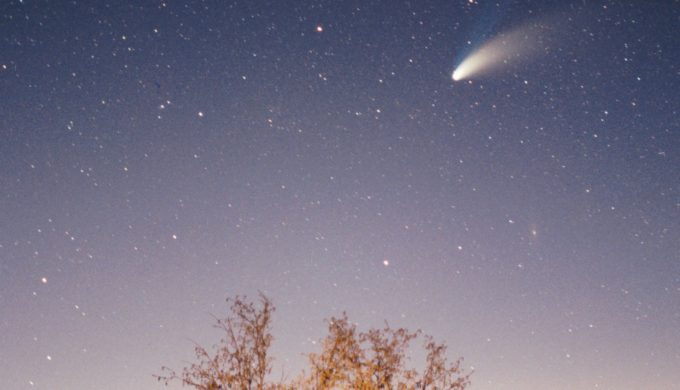A celestial surprise is in store for stargazers on Friday, February 10, when the full Snow Moon coincides with a lunar eclipse as well as a passing comet – all three visible from Earth! “Snow Moon” is the name given to February’s full moon, since (normally) the heaviest snow falls traditionally occurred in this month, and those who look to the heavens regularly for moon size, shape, and color will be pleasantly surprised to see all three things happening together.
Local News
Full Snow Moon, Lunar Eclipse, and Passing Comet Will Be Overhead on February 10
The Full Snow Moon

Photo: Pixabay
Also identified as the Hunger Moon due to the fact that it was traditionally a time that was difficult for hunters to find food, this full Snow Moon is expected to rise at 4:18 p.m. (CST) on Friday and set at 5:33 a.m. (CST).
The Lunar Eclipse

Photo: Wikipedia
Anticipated to be visible from the majority of North America, including Texas, on Friday night, this lunar eclipse is known as a penumbral eclipse, since the full moon will be passing into the Earth’s penumbral shadow. Onlookers won’t be able to recognize the eclipse until the moon’s edge is approximately half-way past the shadow, however, since the Earth’s penumbra is quite pale and hard to detect. The best times for viewing are expected to be between 6:44 and 8:55 p.m. (CST).
The Passing Comet

Photo: Wikipedia
Beginning its trip across the northern hemisphere at the close of last year, the comet is scheduled to reach its closest point to the Earth in the early hours of February 11. Comet 45P/Honda-Mrkos- Pajdušáková, named for the astronomers that discovered it in 1948, is expected to be visible to the naked eye just prior to sunrise, and will appear as a small, fuzzy ball. It’s visible from Earth every five-and-a-quarter years, and it’s recommended that a telescope be used for the greatest opportunity to see its greenish-blue glow.
Source:


